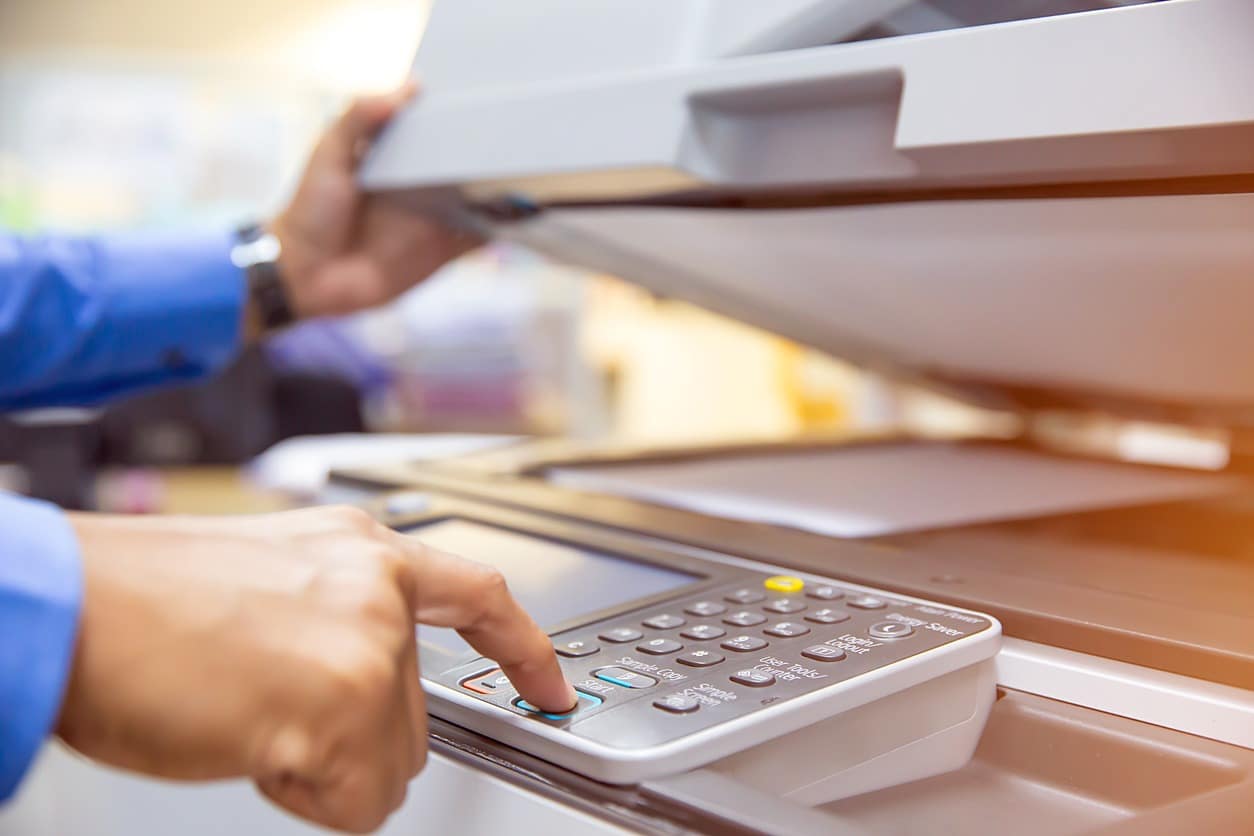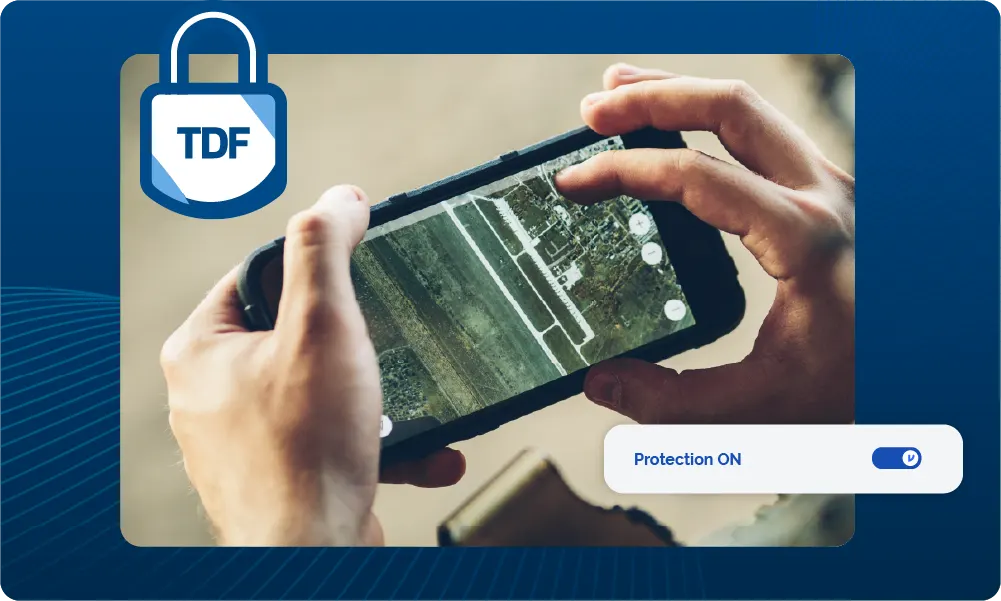HIPAA-Compliant Fax Alternatives & Solutions

Although there have been many advances in technology in the healthcare industry, fax has remained a primary mode of communication and transfer of information even though it’s not the most secure or HIPAA-compliant way of doing so. Not only do faxes pose an issue for information security, but healthcare industry breaches are increasing drastically year over year, and health information is highly sought after data for hackers, which makes it even more important to safeguard. End-to-end email encryption and data protection is a great alternative to traditional faxing. Read on to find out why.
Is Faxing Secure?
The use of faxing for sharing of Protected Health Information (PHI) has been around for a long time, however with new technologies, faxing has become outdated and more inconvenient to use. Using a fax machine doesn’t give you the opportunity to collaborate with others which is typically necessary for delivering health information and patient care. Although faxing is immune to spam and other viruses which can create an insecure environment, other factors like human error and dialing the wrong phone number are very common problems and will cause sensitive information to be sent to the wrong party.
With all fax machines using the same protocol, paired with how easily documents can be intercepted by the unintended group, faxes are no longer secure enough for PHI and it’s time to start looking for alternative solutions. Not to mention, it simply isn’t efficient to create an electronic graphic image (a fax) from an electronic file, just to put that information back into a different electronic filing system. On top of that, the paper fax then needs to be filed or shredded. The more hoops there are to jump through, the more doors that may unintentionally be left open for breaches.
Is Faxing HIPAA-Compliant?
In 1996, HIPAA created national standards that protect sensitive patient information and prevent it from being shared or disclosed without the patient’s consent. This is intended to reduce healthcare fraud and abuse, but HIPAA also serves to improve efficiency in the healthcare industry and to improve the portability of health insurance. When sending and receiving patient information, HIPAA guidelines must be followed not only to avoid a fine, but to ensure patient privacy. While faxing is technically HIPAA-compliant, it’s not an efficient or convenient way to share patient information. Not to mention, faxing does not allow for easy collaboration between providers and patients.
Regardless of how you choose to share patient information, understanding the requirements for HIPAA compliance and ensuring that your organization follows the best practices for protecting PHI is critical to being able to share patient healthcare information.
What are Fax Alternatives?
Electronic Medical Records (EMRs) and Electronic Health Records (EHRs) are suitable alternatives to faxing for sharing patient information. EHRs give both providers and patients the ability to access health records in real-time. Additionally, this information is taken with them through different practices, doctors, networks, and labs, diminishing any need to print out or fax parts and pieces of this information which ensures the information stays secure at all times within the network. Although the use of either an EMR or EHR is one of the most common methods of sharing healthcare data, there are still a plethora of risks associated with these electronic file sharing systems.
EMRs and EHRs rely on a secure network to share patient information safely, however, securing the network isn’t enough. Traditionally, IT security involves securing the network opposed to the data itself. This means that the patient’s medical record is secure when in the hospital, but not when it’s emailed to the patient or a provider at another practice. If a tablet at the hospital is lost or stolen, once the data leaves the network boundary, it’s no longer secure, putting many patient’s PHI at risk.
Google Drive, Dropbox, and other cloud sharing services are great for sending and receiving documents with sensitive information or PHI. Although cloud sharing is more secure to use than faxing, it’s worth noting that breaches are still common, which calls for extra data protection. Cloud file sharing services don’t rely on network security like EHRs & EMRs, instead, with an added layer of security in the form of end-to-end encryption the data itself is protected, so even when the files leave the network, they’re unable to be accessed by unauthorized users, and they remain HIPAA-compliant.
Using email for secure file sharing is the simplest way to send and receive important health-related information. The use of email allows healthcare providers to collaborate across network boundaries but an added layer of security is needed to ensure the privacy of patient data when sharing via email.
Secure Email as a Fax Alternative
Even though popular email platforms such as Gmail or Outlook already have basic security features—such as TLS encryption that protects the data within the network—end-to-end email encryption is needed in order to meet HIPAA compliance requirements for sharing PHI via email. End-to-end encryption protects the data itself, as opposed to the network.
To better understand how the use of email can be a HIPAA-compliant alternative to faxing, let’s take a look at the HIPAA Security Rule and compliance requirements. In 2003, The Department of Health and Human Services (HHS) developed guidelines for managing patient data. Along with the guidelines and standards, HHS implemented two decrees. These include the HIPAA Security Rule and the HIPAA Privacy Rule. The HIPAA Security Rule deals with the protection of electronic PHI that is created, received, maintained or transmitted—for example when sharing via email or storing on the cloud—and includes three standards: Administrative Safeguards, Physical Safeguards, and Technical Safeguards.
Administrative safeguards include things like risk analysis, employee training, security policies and security procedures. Physical safeguards include workstation security and policies that determine appropriate use of workstations. With regards to HIPAA compliance and emails, we are mostly focused on physical safeguards which include access controls, audit controls & transmission security. Technical safeguards are defined as “the technology and the policy and procedures for its use that protect electronic protected health information and control access to it.”
Accessing PHI quickly and safely is important to healthcare providers and organizations, and sharing medical records and PHI through email is often the easiest course of action. Because of this IT teams need to focus on access controls, audit controls and transmission security to comply with the technical safeguards of the HIPAA Security Rule. Let’s break down what each of these statements mean.
- Access controls are privileges for the appropriate employees to access PHI in order to perform their job to the fullest extent.
- Audit controls encompass the technology and processes that support the analysis of information systems that contain or use ePHI and the activity within these systems. This technology keeps a close eye on data to determine whether a breach has occurred, and impacts of breaches.
- Transmission security is related to the technical measures in place to protect against unauthorized access to PHI transmitted electronically. This includes Integrity Controls that prevent improper modification of PHI and encryption that protects PHI from unauthorized third parties.
Healthcare providers have several things to consider when selecting an alternative to fax systems: How to properly protect personal data, how to easily share PHI to collaborate with other healthcare providers and the patient, and how to meet compliance requirements. At the end of the day, it comes down to selecting the option that enables you to provide the best care for your patients. So, if you’re considering replacing your outdated fax system with email, look for a solution that fits seamlessly into existing workflows. Virtru’s email encryption is embedded in applications you’re already using like Gmail or Outlook, which makes for easy integration and high user adoption.
To learn more about using email as an alternative to faxing patient healthcare data, take a look at our guide below.
Enabling HIPAA Compliant Digital Healthcare Services
As an alternative to outdated methods such as fax, email and file-sharing platforms require additional layers of protection to meet HIPAA compliance requirements. This guide identifies key pain points associated with traditional data protection methods and uncovers how data-centric, user-first protections support rapid care delivery and keep patient data confidential and compliant.
Download Now

Editorial Team
The editorial team consists of Virtru brand experts, content editors, and vetted field authorities. We ensure quality, accuracy, and integrity through robust editorial oversight, review, and optimization of content from trusted sources, including use of generative AI tools.
View more posts by Editorial Team









